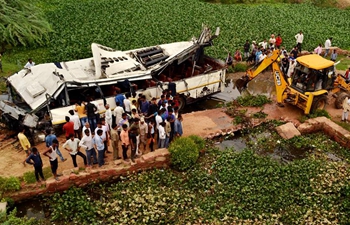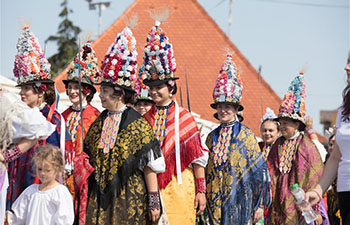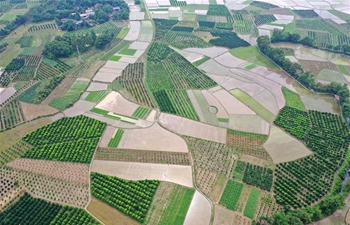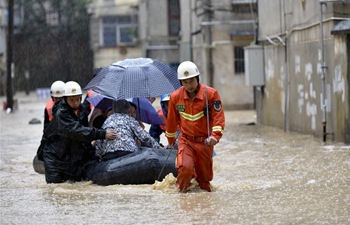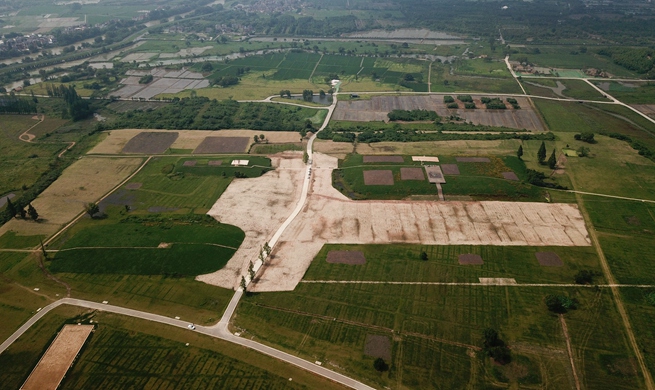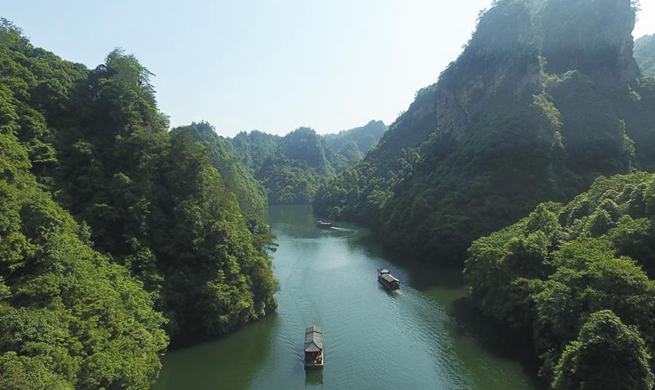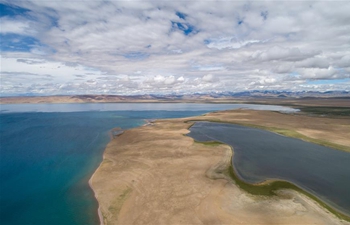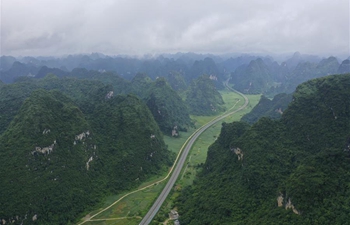YINCHUAN, July 8 (Xinhua) -- "Muddy pit" is the English translation of a village name in northwest China. It was a persistent reminder of the dirt roads and destitute village that has existed there for centuries.
"When I first came here, the compound of the village committee was full of wild grass. Whenever I opened my door, people came to me with nothing but complaints," said Qin Zhenbang, an official who was dispatched by the county to lead the village two years ago.
Lannitan, or muddy pit, is a typical village in Xihaigu, a region where over 2.2 million people live in northwest China -- historically and even internationally known for its harsh environment.
Still, close to 90,000 people in the area live under the poverty line with an annual per capita income of 2,300 yuan (about 338 U.S. dollars). China aims to eradicate poverty by 2020, the target year to finish building a moderately prosperous society in all respects.
For Qin, achieving the target means finding sources of income for 554 villagers who live in Lannitan. He used poverty funds to help people buy cows and sheep.
Each villager gets 3,000 yuan when purchasing a calf, which depending on the weight, is sold from 10,000 to 20,000 yuan when it grows up.
"People say if you have two cows, you will have nothing to worry about because they are worth enough to sustain one's life. Two years ago, the village had only 80 cows, now we have over 750," said Qin.
Last year, as villagers became better off, they voted to change the name "muddy pit" to a more beautiful one, Hanjiang, meaning "embracing the river." Hanjiang is the name of a district in east China's Fujian Province, which is tasked to support poverty-relief projects in the area. It helps the village build service center, factories, street lamps and gives grants to students.
With persistent efforts, the poverty rate in Xihaigu dropped from 27.3 percent in 2014 to 4 percent in 2018. However, officials warned that the battle against poverty might get harder.
"Eradicating poverty is not easy, and it is even more difficult to make sure the results are sustainable," said Shi Taifeng, Communist Party secretary of Ningxia Hui Autonomous Region, where Xihaigu is located.
"Priority shall be on preventing people from falling back into impoverishment. We can not withdraw efforts or slacken once we meet the target," he said.
Throughout the region, issues related to poverty are dealt with precision and case by case solutions.
Many people have taken up cattle farming, and others make money from growing profitable fruits and vegetables.
About three hours drive north from the "muddy pit" village, farmers in the Xiamaguan Township grow 133 hectares of asparagus, the first time in history that the vegetable has been farmed in the town.
"We used to grow grains here because the soil is rich in selenium. Though asparagus is not locally consumed, it is popular in southern China where people favor dishes made from the vegetable," said Dong Zhanping, a local official.
Though agriculture remains the primary sector for job creation, local authorities are supporting new factories to hire impoverished people. A spinning factory under construction is expected to employ 2,000 people next year.
Authorities said most of the people who still live under poverty lines are people with disabilities, senior citizens living alone and those who suffer from illnesses.
They are working to provide social welfare and training sessions to prepare them for jobs such as art designers for e-commerce advertisements, chefs, and craftsmen.
During the last 20 years, vigorous efforts in afforestation, reclaiming land from sand, and river cleaning projects in Xihaigu have led to an improved environment.
"Xihaigu was inhabitable because there was a vicious circle of damaged environment, which leads to drought and lack of rain, and therefore poverty," said Zhang Zhu, Communist Party chief of the city of Guyuan.
"Only by putting the environment first and seeking green development can we fundamentally change the landscape of the area," he said.




